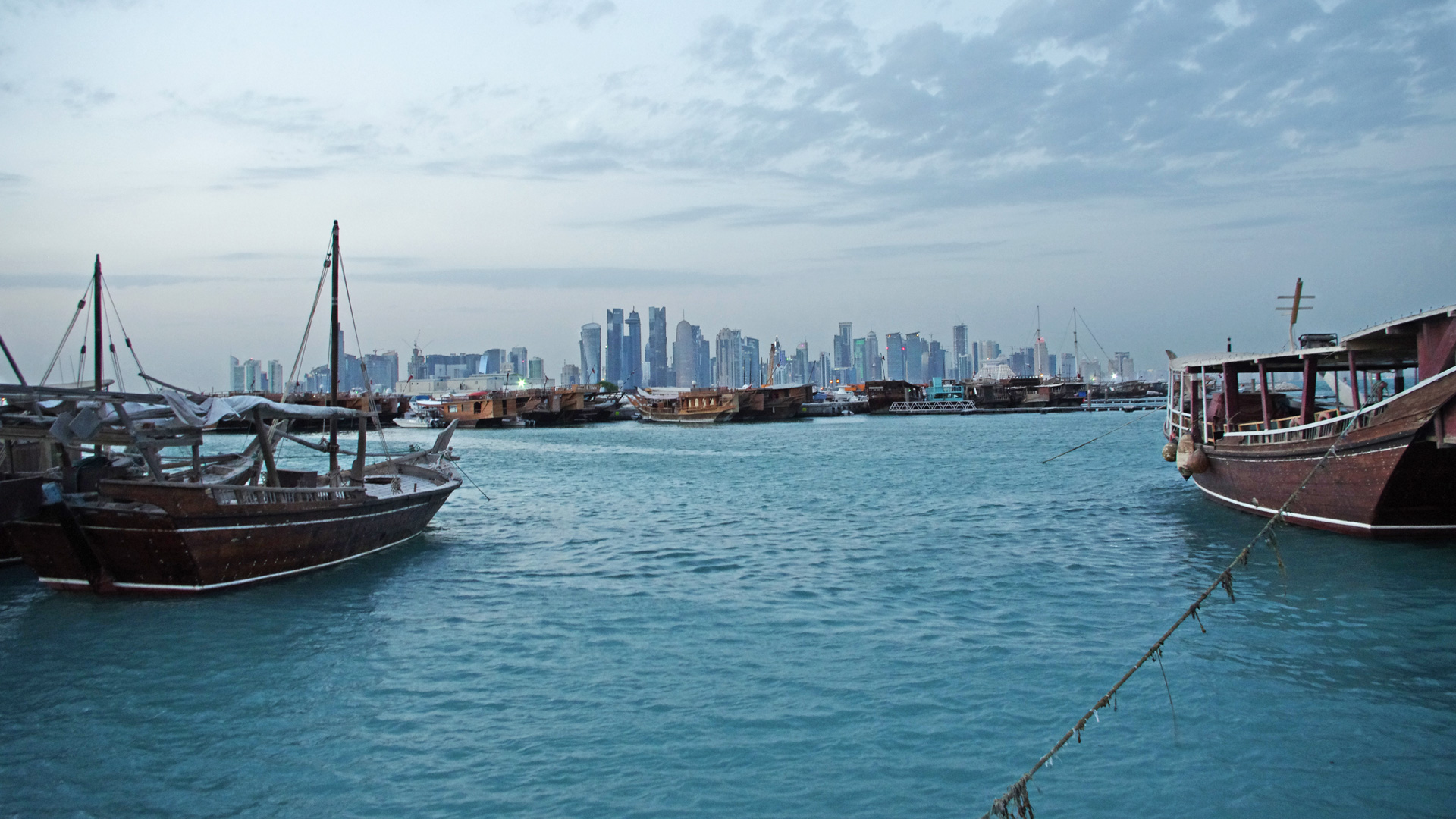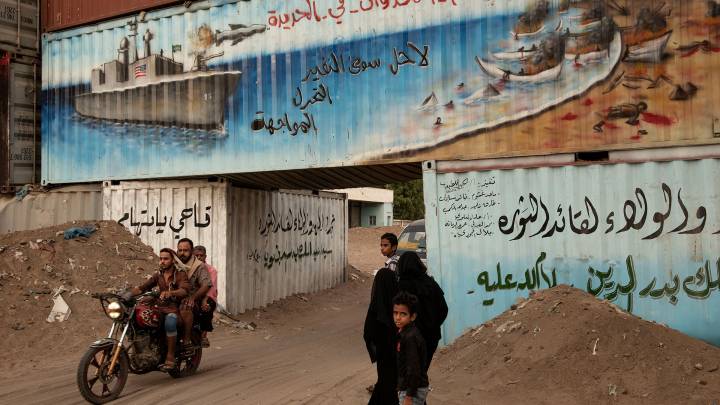If Saudi Arabia and its allies can’t get their recalcitrant neighbour to budge, does that mean Qatar won the blockade crisis? It’s a tempting conclusion, but the reality of interconnectedness in the Gulf paints a different picture.
Since the 2017 Qatar crisis began, the standard thesis of many media pundits and too many academics has been that Qatar “won” and the so-called Anti-Terror Quartet (ATQ) of Saudi Arabia (KSA), the United Arab Emirates (UAE), Egypt, and Bahrain “lost”. As another commentator noted, “Too much ink has been wasted on articles poorly analysing the conflict, often defending Qatar and portraying its neighbours as unreasonable in their demands.”
I guess this should be no surprise as many writers have profited from the crisis directly or indirectly by writing highly inflammatory or over dramatic pieces instead of more thoughtful analyses. Some of this can be blamed on Qatar and KSA, which have spent enormous sums of money, at least $1.5 billion each on PR campaigns against each other.
Writers tend to view this crisis as a game of chicken, instead of a long-historically driven process.
Analysts mostly focus on the crisis in terms of gauging the “reputations” of each country in the crisis like a soap opera or reality TV show. For example, in a piece titled “Qatar Won the Saudi Blockade” writer Hassan Hassan overdramatizes the events saying that “One year later, Qatar has more influence in the West than ever.” But Qatar also hasn’t got what it wanted nor has its influence in the wider world really changed. If it had the “the sanctions from Saudi Arabia and its allies would have ended long ago”. Writers also tend to view this crisis as a game of chicken, instead of a long-historically driven process.
There are many examples of this. Kristian Ulrichsen, a Gulf analyst with the Baker Institute at the US-based Rice University, said “The sense of bitterness and betrayal on all sides is so great, and nobody wants to be seen to be the one who blinked first.” Another Middle East expert, Christopher Davidson at Durham University, used the same way of thinking saying “The only real way out is for Qatar to agree to the blockading nations’ original demands.” And: “This is the only practical scenario that will allow Riyadh and Abu Dhabi to sufficiently save face, and that will prevent another crisis emerging further down the line.”
The crisis was a very nice distraction from other failures
The results of the blockade are not dichotomous nor is this conflict anywhere near this simple. The Qatar crisis is part of a long string of failures in foreign policy by both sides, and no one wins. As I said in a previous article, you can focus on history, economics, or other institutional reasons to explain the crisis, but at the end of the day the crisis was personal and part of a larger family feud that was a long time coming. We now know much more about the causes and real, tangible consequences. I go through some of the lessons not often shared about the conflict.
In many ways, the Qatar conflict is a nice distraction from the foreign policy disasters of the GCC states in the last five years. There have been many narratives bandied around about the power shift in the Middle East to the Arab Gulf. The collapse of Iraq as a state after 2003 and the events of the Arab Spring, which weakened Egypt, left a power vacuum that Saudi Arabia and Qatar were trying to fill.
Banning support for a variety of terrorist/extremist groups, looks more like the lame-duck version of the treaty of Versailles than a reasonable negotiation.
While the story goes that Qatar supported a revolutionary wave while Saudi Arabia opposed it, they both failed. Attempts to install compliant governments in Libya, Tunisia, Syria, and Iraq mostly led to a loss in diplomatic capital. Most recently, the latest failure is in Syria, where the Assad regime’s defeat of rebels in Aleppo and the south of the country results in both Qatar and KSA becoming less involved with extremist groups in the Levant.
The crisis was not really meant to be solved in the short term
KSA has failed repeatedly since 1995 to curb Qatar’s tendencies, and aside from those ordered or paid to say so, the reasons for the blockade were not convincing. ATQ’s June 22nd list of 13 demands, including closing Al Jazeera and other media affiliates, shutting down a Turkish military base, reduction of economic and diplomatic relations with Iran, and banning support for a variety of terrorist/extremist groups, looks more like the lame-duck version of the treaty of Versailles than a reasonable negotiation. Furthermore, accusations that Qatar’s support of terrorism would lead to a destabilization of the region was far-fetched, to say the least. According to a report by Qatar-owned Al Jazeera, “Qatari officials immediately dismissed the document as neither reasonable nor actionable”. On the other side, “the Saudi camp was unconvinced that Qatar, even if it engaged with the demands, would genuinely change its behavior.”
Riyadh's coalition looked more like George Bush Jr.’s “Coalition of the Willing” circa 2003 than a powerful coalition against Qatar.
There is no real reason to think that the crisis will end anytime soon or that either side actually wants to bridge the gap. In separate statements over the last few months, the foreign ministers of the four countries that have isolated Qatar have said they are willing to extend their boycott indefinitely. Adel Al-Jubeir, Saudi Arabia’s recently demoted foreign minister, said the standoff with Doha will continue until the leadership decides to make amends. “The ball is in their field”. Anwar Gargash, UAE Minister of State for Foreign Affairs has said the Qatar boycott could “last years.” Bahrain and Egypt have echoed the same sentiments on the status quo.
The ATQ (plus friends) was not a serious threat to Qatar’s sovereignty
The rivals of Qatar were the ATQ, in addition to the Maldives, Mauritania, Senegal, Djibouti, the Comoros, Jordan, the Tobruk-based Libyan government, and the Hadi-led Yemeni government. This coalition looked more like George Bush Jr.’s ‘Coalition of the Willing’ circa 2003 than a powerful coalition against Qatar. Key allies that would have made ATQ’s boycott a real threat to the sovereignty of Qatar stayed away. Pakistan, for example, is one of the main military contractors and power players in the Gulf. From the outbreak of the crisis Pakistani leaders stated succinctly that they had no interest in cutting ties with Doha.
The Philippines is also a country that could have hurt Qatar’s economy badly by refusing to allow its workers to go to Qatar. While the island nation suspended the deployment of migrant workers to Qatar on June 6, 2017, the suspension was fully lifted by June 15. Perhaps most important is the role of Egypt, a key member of the ATQ. While it has supported the blockade, it did not recall its 200,000 citizens that live and work in Qatar. If they had gone home it likely would have crippled Qatar, as Egyptian expatriates are in important mid-level positions in the government bureaucracy and many private companies.
The economic cost of the crisis is expensive, but it did not devastate Qatar
While various authors have argued that the goal of the blockade was to force Qatar into a “vassal state” status I would argue that the quartet’s real goal was to essentially make Qatar pay a heavier price for its political autonomy.
Before the blockade Qatar was highly integrated economically with its neighbors, especially Saudi Arabia and the UAE. In 2015, the value of Qatar’s trade flows totaled over $2 billion with Saudi Arabia, $7 billion with the UAE, and $500 million with Bahrain. Cross-country investments from both sides total in the tens of billions of dollars. The Saudi and UAE banking sector’s exposure to Qatar was estimated to be around $30 billion each.
The boycott hurt second-quarter GDP, but Qatar used $38.5bn (equivalent to 23% of GDP) to support the economy in the first months of the crisis. Qatar has been forced to forge new trade routes and provide additional support to its local economy to combat the premium it has had to pay airlifting staples for its population after Saudi Arabia closed its land border, where as much as 40% of Qatar’s imports used to flow. As part of the Qatari government’s response to lost food imports, it provided support to domestic agricultural company Baladna, which built a new dairy farm using imported cattle.
The costs of a long-running boycott may eventually take their toll, especially as Qatar prepares to host the World Cup
While expensive, because of this infusion of cash, the direct economic and financial impact for Qatar as a result of the boycott is fading, according to a report from the International Monetary Fund. According to S&P Global Ratings, banks in Qatar are strong enough to survive any more financial withdrawals from GCC countries.
This is because Qatar is a global leader in liquefied natural gas production (28% of world supply) and the second largest supplier of helium in the world. The economic independence of Qatar from its neighbours was highlighted by its recent move to quit OPEC. Qatari oil minister Saad Al-Kaabi says the “decision is not linked to the ongoing economic boycott imposed by Saudi Arabia and its allies”. It certainly makes business sense for Qatar to cut ties with OPEC as its oil production is only 600,000 barrels a day – a small amount by OPEC standards. The bottom line is, Qatar’s withdrawal from OPEC highlights its long-term strategy to diversify its resources and position itself for economic opportunities in the 21st century.
The majority of up to 1.3 million fans visiting in 2022 would likely be Saudis, currently banned from travelling to the country.
As a Brookings Institute report stated, “This will arrive in the form of lost business opportunities, revenues from tourism, and reduced investments from Qatar”. The tourism and retail sectors are unlikely to recover quickly. Since June 2015 visitor arrivals are down 20 per cent compared to the previous year. Flights into Qatar were down 25 per cent and flights by Qatar Airways were cut by 20 per cent. Before the crisis, there were over 70 flights a day between Qatar and its ATQ neighbours, now cut to zero.
Research consultancy Capital Economics estimated that tourism since the start of the blockade to the end of 2017 dropped $600 million compared to the previous year. There has also been some pullback in spending on infrastructure related to the FIFA World Cup 2022 in Qatar. The costs of a long-running boycott may eventually take their toll, especially as Qatar prepares to host the World Cup. Qatar has previously said the majority of up to 1.3 million fans visiting in 2022 would likely be Saudis, currently banned from travelling to the country.




